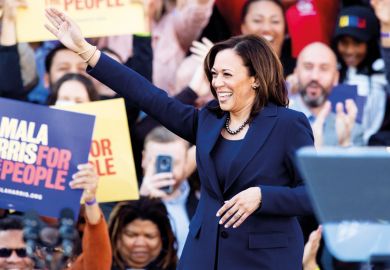The political focus on “free college” during the current US presidential election cycle is a distraction from assisting students, when the emphasis should be on developing rigorous systems of institutional performance incentives, higher education leaders have been warned.
Experts from various affiliations, including a Trump administration official, told an Inside Higher Ed conference on the future of public higher education that decades of increased federal support for low-income students often succeeded largely in giving state governments room to cut their college funding.
The administration official, Diane Auer Jones, the principal deputy undersecretary in the Department of Education, said that reality was demonstrated by Obama administration efforts to boost funding for community colleges. The move served as a useful experiment, Ms Jones said, that showed states correspondingly reduced their support for such colleges rather than supplementing it.
Such examples prove the challenge of distributing federal money in a way “that it doesn’t give states the excuse to just pull more money out of higher ed”, Ms Jones told the conference, held in Baltimore.
Several other experts at the conference – while disagreeing with much of the administration’s approach to education – said they also recognised fundamental flaws in campaign-year promises about the federal government somehow creating systems of “free college”.
The experts – including former Obama administration official Zakiya Smith Ellis, now secretary of higher education for the state of New Jersey, and Tiffany Jones, director of higher education policy at the advocacy group The Education Trust – joined Ms Jones in suggesting that creating sophisticated data-driven incentives for better performance by colleges could be more effective than handing more money to students.
Dr Ellis said the Obama administration lamented the fact that it fought hard to increase spending on the Pell Grant, the main federal subsidy for low-income college students, from $16 billion (£13 billion) to $40 billion (£32 billion), only to see relatively minor effects on student ability to afford college. Policymakers need to concentrate on changes that are “meaningfully different for people’s lives”, she said.
Without some change in approach, said F. King Alexander, the president of Louisiana State University, many US states are on a pathway to completely eliminating their funding for higher education. Colorado appears to be in the lead, on a trajectory that would end state support for colleges within six years, with other states not far behind, Dr Alexander told the conference.
Steps to increase federal aid to students therefore do not make much sense without giving colleges strong incentives to earn the money they are already receiving from all sources, Dr Alexander said. “We’ve got to shut the back door before we put any money in the front door,” he added.
Despite such concerns, most of the leading Democratic contenders for the 2020 presidential nomination have promoted some version of free or debt-free college to help address record levels of student debt.
Such talk is welcome as a matter of inspiration, Dr Ellis said. “The campaign is not the time for prose, you want it to be poetry,” she added. But, she and other experts told the conference, students will be better served by policymakers who create firm performance-based incentives for colleges and universities. State lawmakers and voters hopefully will respond to such demonstrated accountability by reversing years of cuts in funding, Dr Ellis said.
Ms Jones spoke in similar terms, saying the Trump administration has been working towards that end by improving the Department of Education’s system for publicly reporting data on institutional performance. But she emphasised the role of students as first-line judges of institutional quality. Using data to create productive incentives for institutions is also desirable, but more difficult to achieve, Ms Jones said. “I can’t say that we have the formula worked out, but that’s the goal, to get there,” she added.
Register to continue
Why register?
- Registration is free and only takes a moment
- Once registered, you can read 3 articles a month
- Sign up for our newsletter
Subscribe
Or subscribe for unlimited access to:
- Unlimited access to news, views, insights & reviews
- Digital editions
- Digital access to THE’s university and college rankings analysis
Already registered or a current subscriber?






